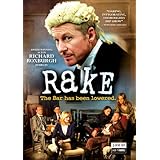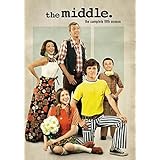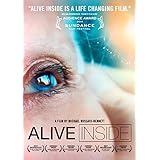[EDITOR'S NOTE: Unreal TV reviewed the film "The Historian" on Thanksgiving Day 2014.]
An awesome aspect of being invited to review the recently theatrically released film "The Historian" was the chance to interview Theater Hall of Fame member John Cullum, who arguably is best known for playing restauranteur Holling Vincoeur on the classic TV series "Northern Exposure."
The excitement regarding talking with Cullum extended beyond connecting with a beloved actor; he essentially confirmed that he is the person whom I thought that I recognized but could not immediately place while walking through an airport roughly 20 years ago. The big bright smile that Cullum bestowed on the lout who stared at him as they approached each other was as gracious as the insights that he shared yesterday.
Cullum on "The Historian"
Cullum's Brigston Hadley in "The Historian" is the father of college professor Valerian Hadley, whom William Sadler portrays. Cullum did not share the sense that he and Sadler bear a strong resemblance to each other but stated that he played the father of Sadler's character on the wonderfully fun early-2000s scfi series "Roswell."
Cullum, whose earlier acting career includes several Shakespearean
productions, also stated that he did not base his portrayal of Brigston
on King Lear but agreed that the two characters possessed similar
characteristics.
Cullum shared on a more general level
that "I'm not a method actor in that I do not have to think of
something that happened to me; I'm interested in the story and the
dialog."
Cullum added that one exception to the
approach described above was that he partially based his Tony winning
role in "Shenandoah" on his father and his great-uncle.
Cullum also stated that he did not think that "Historian" writer/director/co-star Miles Doleac knew that Cullum had appeared in "Roswell." The plain-spoken actor added that Miles called him after signing Sadler up for the film and that Cullum concluded that "there weren't any reasons to say no and many reasons to say yes."
The reasons for saying yes included the shooting schedule in Hattiesburg, Mississippi fitting Cullum's schedule and his liking the script.
Comments related to the appeal of the script included noting that "father-son relationships have dominated drama back to "Oedipus (Rex)," and that "family relationships are the most powerful of all."
Tennessean Cullum volunteered as well that he liked the open unencumbered attitude that Doleac demonstrated and confirmed that Doleac being a fellow southern was a factor regarding their good working relationship.
Cullum on 'Northern Exposure'
The incredible enthusiasm that Cullum still feels toward doing "Exposure" in the '90s was music to the ears of this fan of that series. This clear regard for doing the series began with Cullum expressing surprise when asked if the "Exposure" producers had the cast attend a retreat to create the bonds that were so apparent among that group. Collum simply responded "They didn't have to."
Collum expressed particular affection for co-star John Corbett, who played spiritual ex-con DJ Chris Stevens. Collum noted that Corbett often improvised and shared an awesome story about watching the then long-haired Corbett pick up a pair of scissors in the make-up room for the show and cut off all his hair simply to see how it would look.
Cullum wondering what Corbett was currently doing prompted looking up the IMDb profile of the latter. Reporting back that Corbett had done some good things and some pretty lousy projects prompted Cullum to laugh and reply "haven't we all."
Along similar lines, Cullum stated several times that "Exposure" wife Cythnia Geary was gorgeous and noted that that show was her first major role. He noted further that she had trained as a singer.
A discussion of Geary's interest in singing led to reminding Cullum of the episode in which Geary's Shelly developed a condition that resulted in her only being able to verbally communicate by singing. Cullum noted that as an example of the "Exposure" writers writing for both the characters and the performers in those roles.
Similar to the research regarding Corbett, a look at a listing of Geary's recent work revealed a role in a 2012 made-for-TV Bigfoot film. Cullum was a true gentleman in learning about that one.
Cullum next stated that much of "Exposure" was filmed in the small town of Rosslyn, Washington and that that community had a restaurant that shared the name of "The Brick" in the series. In his typical style, Cullum had high regard for that community.
The only sad aspect of this discussion of "Exposure" was that Cullum did not express much optimism regarding the possibility of an "Exposure" reunion film but seemed very willing to participate in any such project.
Cullum on Cullum
The awesomeness of Cullum extended to his being one of the nicest and most genuine celebrities interviewed in an eight-year career writing film and television reviews. This particularly came across when commenting to Cullum that seeing "The Historian" on the marquee of the The Quad theater near his Manhattan home when the film opens there on November 28, 2014 certainly will not be a thrill after roughly 50 years as a live theater, film, and television actor.
Cullum replied "I'm certainly not blase about seeing myself in something I've done. I'm humbled by watching a performance."
This led to asking (and hoping) whether a Cullum autobiography was a possibility. This prompted the highly inaccurate response "I didn't feel that my career justified that kind of treatment."
Cullum added that the theater world has dubbed him "the legend" based on his longevity in that industry. However, his frustrating inability to recognize his greatness resulted in his adding that everyone in theater was known as a legend.
If working with Richard Burton on "Camelot" and "Hamlet," doing two plays with Arthur Miller, winning two Tony awards, still being an active working actor at 84, etc. does not warrant an autobiography, nothing does.
Cullum offered the consolation that he recorded a 90-minute podcast for the "Footlight Parade" series that "The Musical Theater Project" Artistic Director
Bill Rudman produces and hosts. Cullum commented that he told Rudman at that time that "you have managed to do my biography ... and I liked it!"
A very gracious Rudman subsequently discussed the exceptional experience regarding talking with Cullum; when asked for a recording (which included Cullum singing songs from his shows) of their conversation, Rudman good-naturedly responded with a chuckle in his voice "that is my interview."
Cullum equally graciously declined a request to sing "Come Back to Me" from his Broadway production of "On a Clear Day You Can See Forever." He provided the ample consolation prize of performing a few lines from "Lear."
Cullum on the Future
On asked the shamefully lame chestnut "what's next for you," Cullum shared that he has returned to a project on which he has worked on-and-off for years. It is a musical version of the Appalachian folk stories that are known as "Jack" tales that include "Jack and the Beanstalk."
Cullum stated that these stories included "Jack and the Doctor" in which Jack of "Beanstalk" fame took on the challenge of convincing the titular physician that Jack is worthy of marrying the daughter of that medical practitioner. Cullum added that his plans include playing the doctor.
Regarding future television projects, Cullum expressed his trademark enthusiasm for an upcoming ABC mini-series titled "Member's Only." This production about the behind-the-scenes goings on at an exclusive country club is scheduled to air in February 2015.
Cullum described the 80-year-old retired U.S. senator that he plays in "Members" as "a womanizer and a drunk." He expressed special enthusiasm for his first grand entrance in his first scene in the series.
The described tableau was that Cullum's character drove his car up on the curb, knocking over a don't walk on the grass sign. This quickly led to telling the valet that he had not had a bowel movement in nine days and that the valet should ensure that the bathroom in the club was well stocked with toilet paper.
Cullum provided the additional spoiler that his character's trophy wife had left him for his son. The involvement of Cullum and the seeming similarities between "Members" and the uber-uber-awesome film "Scenes From the Class Struggle in Beverly Hills" in which a son announces to the entire family that he has reason to believe that he is hung like a rhino compared to his father make "Members" worth checking out.
In Conclusion
The only thing left to share regarding the exceptional hour spent talking with Cullum is that he definitely achieved the goal of a performer of leaving his audience wanting more. This is on top of solving a 20-year-old mystery regarding whether he was the gracious man walking through an airport.
Anyone with questions or comments regarding Cullum is strongly encouraged to either
email me or connect on Twitter via @tvdvdguy.
















